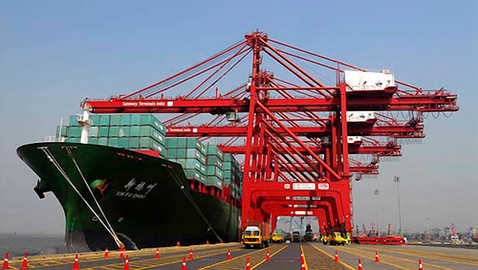
The Indian economy has shown signs of a turnaround, and investment should recover as the decline in political uncertainty has boosted business sentiment, says OECD Economic Survey on India released last month. Fiscal consolidation at the central government level has been accompanied by a decline in both inflation and the current account deficit. Confidence has been boosted by ongoing reforms to the monetary policy framework, with more weight given to inflation. Industrial production has rebounded and business sentiment has surged, triggered by a decline in political uncertainty.
Activity is projected to pick up gradually. Private consumption should grow steadily, particularly in rural areas, reflecting past rises in agricultural minimum support prices (MSPs) and rural wages. Investment should recover as the decline in political uncertainty has boosted business sentiment. If successful, efforts to put large stalled infrastructure projects back on track would also raise investment. The projected rebound in external demand should boost exports. Tight monetary and fiscal stances and high corporate leverage will restrain domestic demand. Inflation and inflation expectations are projected to decline gradually, reflecting some moderation in wages and food prices as well as the implementation of the new monetary policy framework.
Current risks are broadly balanced, although for the medium term risks are on the downside, contingent on the implementation of reforms. Exports, which have been showing signs of recovery after the rupee depreciation in the summer of 2013, may be restrained by supply-side bottlenecks. High corporate leverage and deteriorating asset quality in the banking sector may put investment recovery at risk. Poor weather conditions (a deficient monsoon) could weigh on agriculture and add to inflation pressures.
Growth impediments
Structural reforms would raise India’s economic growth. In their absence, however, growth will remain below the 8 per cent growth rate achieved during the previous decade. Infrastructure bottlenecks, a cumbersome business environment, complex and distorting taxes, inadequate education and training, and outdated labour laws are increasingly impeding growth and job creation. Female economic participation remains exceptionally low, holding down incomes and resulting in severe gender inequalities. Although absolute poverty has declined, it remains high, and income inequality has, in fact, risen since the early 1990s. Inefficient subsidy programmes for food, energy and fertiliser have increased steadily while public spending on healthcare and education has remained low.
India had experienced strong inclusive growth between 2003 and 2011, with average growth above 8 per cent and the incidence of poverty cut in half. This reflected gains from past structural reforms, strong capital inflows up to 2007, and expansionary fiscal and monetary policies since 2009. These growth engines faltered in 2012. Stubbornly high inflation as well as large current and fiscal deficit left little room for monetary and fiscal stimulus to revive growth. The prospect of “tapering” monetary stimulus in OECD countries’ reversal in capital inflows and difficulty to pass reforms to remove growth bottlenecks also weighed on the country’s economic performance.
| MACROECONOMIC INDICATORS AND PROJECTIONS (% CHANGE) | ||||
| (Fiscal year basis) | 2013 | 2014 | 2015 | 2016 |
| GDP at constant prices | 5 | 5.4 | 6.6 | 6.8 |
| Consumer price index (GDP deflator) | 9.5 | 7.1 | 6.3 | 6 |
| Wholesale price index (WPI) | 6 | 4.3 | 3.8 | 4.3 |
| Fiscal balance (% of GDP) | -7 | -6.9 | -6.6 | -6.2 |
| Current account balance (% of GDP) | -1.6 | -1.7 | -1.7 | -2.5 |
| Note: GDP is measured at market prices | ||||











